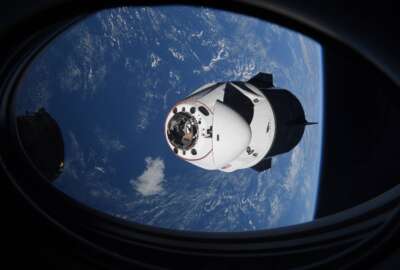Space Systems Command using a ‘buy first’ attitude with procurement
The Space Force organization is trying to avoid reinventing the wheel by buying technologies already developed by business.
SAN DIEGO – Space Systems Command is still not even a year old, however it is trying to find quick ways to procure space products so the Defense Department’s need for those weapons increases.
Space Systems Command (SSC) is adopting a “buy first, build last” approach to acquisition for space products in hopes of rolling them out faster than relying on the military’s slower procurement system to remake the wheel.
The organization stood up its Commercial Services Office at the beginning of the year with the goal of reaching out to industry to find out what kinds of data and services are already available in the commercial sector that DoD and the Space Force can use.
“Can we find other ways of doing GPS or precision, navigation and timing through the commercial market?” said Joy White, executive director of SSC’s contracting activity, during a speech at the Government Contract Pricing Summit. “Can we buy weather capability because we still build weather satellites? Can we buy weather capability services without having to go build something unique? So those are all in play as part of our Commercial Services Office.”
SSC is not only interested in how commercial companies can help, however. White said U.S. allies have been an integral part of building the space infrastructure. After looking in the private sector, White said the Space Force is turning to its partners to grab products that are already available instead of creating something new.
“We’ve got multiple countries partnering with us,” White said. “We’re working with the Japanese to put one of our space domain awareness payloads on one of their GPS satellites. They’re getting ready to build out their own global positioning system, but they have room on one of their satellite buses to house other payloads.”
The U.S. is putting a payload on a satellite that Norway is launching as well. White said DoD expects to save $900 million by putting the payload on Norway’s satellite instead of doing a launch of its own.
SSC is working with allies on electromagnetic spectrum, intelligence, reconnaissance and surveillance and other areas as well. Currently the U.S. has 58 partnerships with about $3 billion in allied investments.
If SSC cannot find what it needs from industry or from its allies, then the command will look into acquisition, White said.
SCC is not following traditional defense acquisition rules, though. The technologies for space move on a much faster timeline. White said SSC has been utilizing mid-tier acquisition and a consortium to connect with industry quickly and get contracts moving.
“The mid-tier acquisition has really helped us to streamline how we do our satellite builds,” White said. “I’m in the command where we’re doing the acquisition. I’m very familiar with what contracting activity is doing and what acquisitions are going on. It’s much easier for me to then approve things that come through because I already know about what’s going on. There’s not a teaching timeframe to explain why I need to approve something as a head of contracting activity.”
White said another part of making procurement faster is creating a solid “front door” for industry. SSC is trying to be as accessible as possible to nontraditional businesses. It’s also created a consortium that companies can join to make it easier to connect with SSC.
Copyright © 2024 Federal News Network. All rights reserved. This website is not intended for users located within the European Economic Area.
Scott Maucione is a defense reporter for Federal News Network and reports on human capital, workforce and the Defense Department at-large.
Follow @smaucioneWFED






